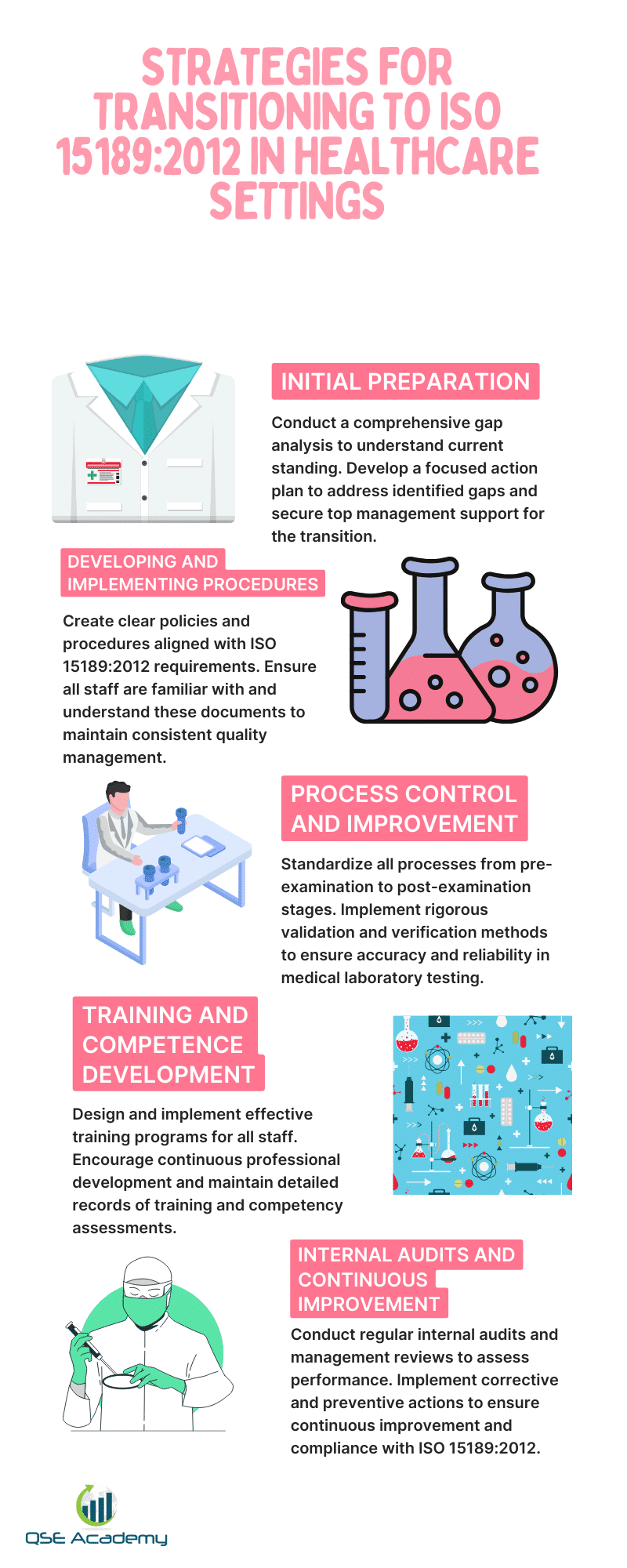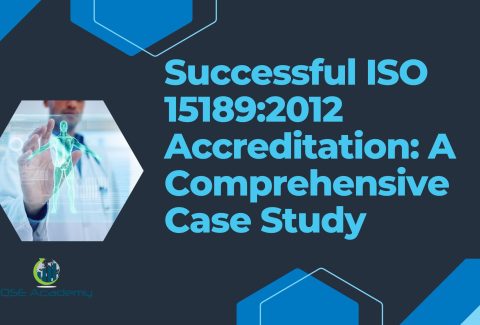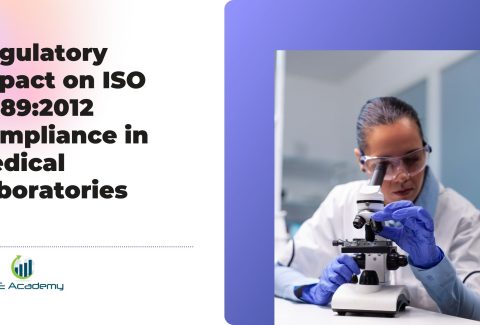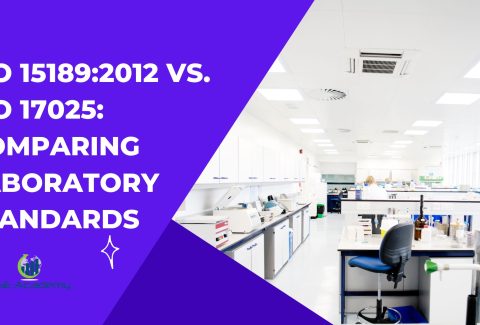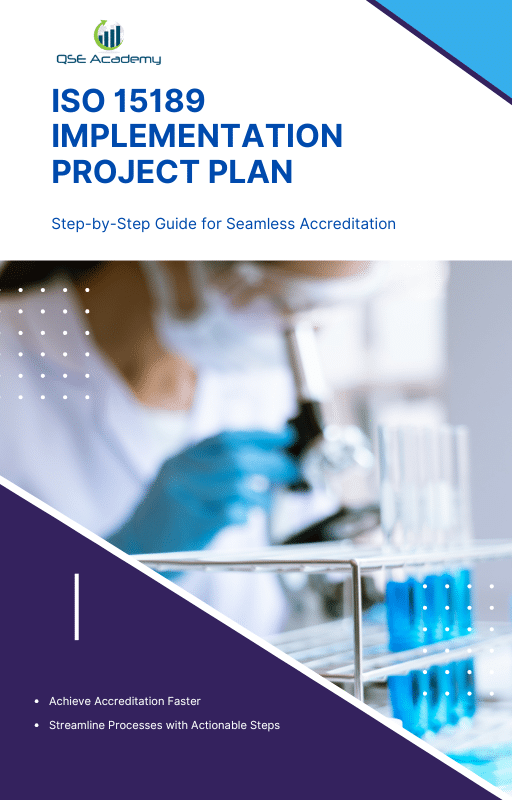Strategies for Transitioning to ISO 15189:2012 in Healthcare Settings
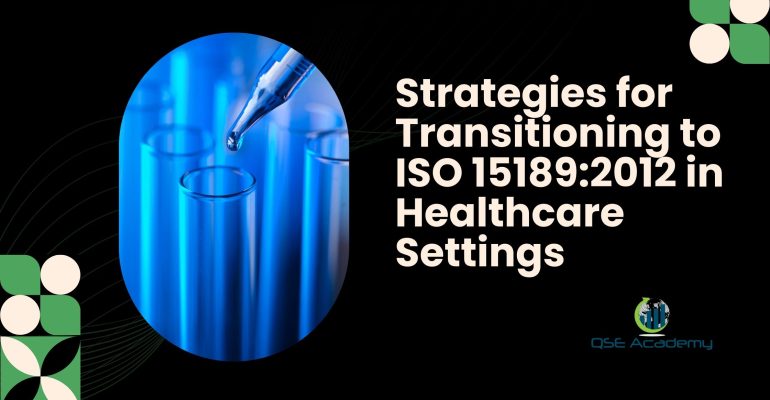
Strategie per la transizione alla ISO 15189:2012 nelle strutture sanitarie
In the intricate world of healthcare, adhering to the highest standards is paramount for safety and effectiveness. ISO 15189:2012 sets a global benchmark for quality and competence in medical laboratories. Transitioning to this standard can be a complex journey. This article is a compass for healthcare establishments navigating the route to ISO 15189:2012 accreditation. Join us as we explore the path to a smoother transition and superior healthcare delivery.
Introduzione
ISO 15189:2012, titled “Medical laboratories — Requirements for quality and competence,” is an internationally recognized standard specifically designed for the compliance of medical laboratories. It sets stringent benchmarks for quality management and technical competence critical for producing precise and reliable test results, thereby enhancing patient safety. Transitioning to the ISO 15189:2012 standard underscores a healthcare facility’s commitment to excellence, providing a framework to improve service quality, ensure accurate diagnostics, and augment the overall care testing process.
The evolution of ISO 15189:2012 from earlier versions reflects the progressive emphasis on risk management, with the aim of minimizing the potential harm to patients that could arise from laboratory errors. The significance of the transition lies in its holistic approach, covering managerial, technical, and quality aspects – all contributing to the improvement of care services. In healthcare settings, adopting ISO 15189:2012 facilitates a culture where clinical personnel are equally engaged in maintaining the integrity of medical laboratory testing.
|
Key Aspects of ISO 15189:2012 |
Brief Description |
|---|---|
|
Sistemi di gestione della qualità |
Ensures comprehensive management of laboratory quality |
|
Focus on Risk Management |
Prioritizes identification and mitigation of potential risks |
|
Requisiti tecnici |
Establishes standards for the technical operation of labs |
|
Competenza del personale |
Ensures the qualifications and ongoing proficiency of clinical staff |
Medical laboratories that successfully transition to this standard not only meet international benchmarks but also foster trust among patients and stakeholders in the quality and competence of laboratory services provided.
Comprendere i requisiti della norma ISO 15189:2012
ISO 15189:2012, titled “Medical Laboratories — Requirements for Quality and Competence,” is an international standard specifically designed to ensure the quality and reliability of medical laboratory testing, which is pivotal in the diagnosis and treatment of patients. The objective of the standard is to enhance patient safety and healthcare outcomes by providing a framework for medical laboratories to manage quality, and improve their operational processes. Moreover, it promotes international harmonization of medical laboratory practices, facilitating reciprocal recognition of test results across borders.
This standard is applicable to various types of medical laboratories, including those within hospitals, clinics, and standalone facilities. The key stakeholders involved include laboratory managers, clinical staff, quality managers, and the entire quality control team who are responsible for implementing the requirements of the standard.
ISO 15189:2012 differs from other ISO standards, like ISO 17025, which is the general requirements for the competence of testing and calibration laboratories. ISO 15189 places a greater emphasis on risk management, clinical personnel, and the applicability of tests to patient care, taking into account the specific requirements of medical laboratory testing and its direct impact on patient safety.
Initial Preparation for Transition
The initial preparation for the transition to ISO 15189:2012 is a critical step towards aligning medical laboratories with the updated requirements for quality and competence. Healthcare facilities need to start by conducting a thorough gap analysis to ascertain their current standing in relation to the new standard. A comprehensive gap analysis will highlight areas that require improvement, as well as strengths to build upon.
Once the analysis is complete, laboratories must develop a focused action plan. This strategy should outline practical steps required to bridge gaps, including securing the requisite commitments from the laboratory’s leadership. Top management plays an essential role in driving the transition, ensuring that the importance of ISO 15189:2012 is clearly communicated and understood across the organization.
Determining appropriate roles and responsibilities for clinical staff and management is also crucial in this early stage. Additionally, medical laboratories must assess their resource needs and allocate a suitable budget. This may encompass adjustments to infrastructure and technology to meet the standard’s requirements. With these initial steps, laboratories begin to lay the groundwork for a successful accreditation process.
Sviluppo e implementazione di procedure
In the journey towards transitioning to ISO 15189:2012, medical laboratories must first establish clear policies and procedures that align with the standard’s requirements for quality and competence. Creating comprehensive documentation is crucial, entailing detailed procedures and work instructions tailored to the laboratory’s operations. These documents serve as a guideline for clinical personnel to ensure consistent quality management and patient safety.
To make sure the policies and procedures are not only available but also understood, healthcare facilities must prioritize accessibility. Staff at all levels, from clinical staff to quality managers, should be familiar with the documentation. This ensures that everyone is aware of their roles and responsibilities in maintaining laboratory quality, therefore minimizing risks and potential harm to patients.
Table: ISO 15189:2012 Policy and Procedure Development
|
Passo |
Azione |
|---|---|
|
1 |
Identifying ISO 15189:2022 requirements |
|
2 |
Drafting clear and concise policies |
|
3 |
Documenting detailed procedures and standards for various processes |
|
4 |
Facilitating easy access to documentation for all laboratory and clinical staff |
|
5 |
Conducting regular reviews and updates to stay current and compliant |
It’s essential for medical laboratories to embrace these steps, as they lay the foundation for achieving and maintaining accreditation. Through continuous improvement and regular management reviews, laboratories assure their commitment to excellence in medical laboratory testing and care service.
Sviluppo del sistema di gestione della qualità (SGQ)
As medical laboratories prioritize patient safety and quality care, the adoption of ISO 15189:2012, the international standard for Medical Laboratories Requirements for Quality and Competence, becomes vital. A well-structured Quality Management System (Q1S) is central to this transition.
The effective QMS should encompass essential components such as a clear organizational structure, responsibilities, procedures, processes, and resources. Moreover, it must integrate the requirements of ISO 15189:2012, including the focus on risk management, to mitigate the potential for harm to patients.
For the QMS to align with the standard, medical laboratories must ensure it addresses critical areas like management reviews, corrective and preventive actions, internal quality controls, and emphasis on laboratory quality. Furthermore, the entire quality management program must be regularly monitored and reviewed by the designated quality manager and the clinical personnel to maintain continuous improvement and compliance.
Document control is a pillar of the QMS, requiring standard operating procedures that dictate version control, distribution, retention, and the secure disposal of documents. This control ensures that clinical staff has access to up-to-date information and that obsolete documents do not compromise laboratory operations.
In conclusion, to effectively transition to ISO 15189:2012, medical laboratories must develop a comprehensive QMS that interweaves the standard’s requirements with robust document control measures.
Controllo e miglioramento dei processi
Medical laboratories undertaking the transition from ISO 15189:2012 to the revised ISO 15189:2022 standard need to place a stringent focus on process control and improvement. These laboratories must ensure that all procedures, from the pre-examination to post-examination stages, adhere to the updated requirements for quality and competence.
Standardizing Pre-Examination Processes:
- Patient identification and sample collection are critical. Mistakes at this stage can lead to patient harm, hence correct labeling and meticulous handling are non-negotiable.
- The secure transportation and storage of samples are as integral as the collection process, warranting clear protocols to maintain integrity.
Ensuring Accurate Examination Processes:
- Clinical laboratories are required to conform to standardized testing procedures. Consistent methodologies reduce variability and enhance reliability.
- Thorough validation and verification of examination methods ensure the precision and accuracy of medical laboratory testing, directly impacting patient safety.
Optimizing Post-Examination Processes:
-
- Laboratories must focus not only on the timely issuing of reports but also on the clarity and accuracy of the information provided.
- Interpretation of results should be supported by clinical correlation, enabling clinical staff to make informed decisions regarding patient care.
In summary, effective transition strategies must involve a comprehensive re-evaluation and subsequent improvement of the entire quality control process, ensuring it aligns with the new ISO focus on risk management.
Audit interni e miglioramento continuo
Audit interni e miglioramento continuo
Essential for Compliance
- Regular internal audits are crucial for ensuring medical laboratories remain compliant with ISO 15189:2022, thus safeguarding the quality of care testing and reinforcing the international standards set for medical laboratory testing.
Procedura di audit
- Begin with preparing an audit schedule.
- Trained auditors assess compliance to the defined standard.
- Audit reports should detail compliance and highlight areas for improvement.
Revisione della gestiones
Guida al miglioramento continuo
- Management reviews are integral to the continual improvement process within clinical laboratories, focusing on maintaining a quality management system that prioritizes patient safety and laboratory quality.
- Reviews assess the effectiveness of quality policies, objectives, and results from audits.
Outcomes Utilization
- Results from these reviews facilitate corrective actions and preventive actions, strengthening the overall care service and internal quality control.
Gestione delle non conformità
- Identification: Non-conformities within the laboratory’s operational procedures must be documented meticulously.
- Action: Appropriate corrective and preventive actions should be implemented effectively to prevent harm to patients and enhance the laboratory’s quality management practices.
Continuous efforts in conducting internal audits, combined with the earnest execution of management reviews, lead to perpetual quality elevation, thereby ensuring that clinical staff can reliably deliver high-caliber care aligned with evolving requirements of ISO 15189.
Gestione dei feedback e dei reclami dei clienti
Raccolta del feedback dei clienti
In the framework of ISO 15189:2022, medical laboratories must employ robust methods to gather feedback from patients, clinicians, and other stakeholders. This necessary step helps in tweaking the care testing processes and enhancing patient safety. Feedback is usually collected through surveys, suggestion boxes, and direct interviews. Analyzing this feedback is crucial for identifying areas requiring improvement. Laboratories should maintain an organized record of feedback to monitor patterns and the effectiveness of the corrective actions implemented.
Gestione e risoluzione dei reclami
Medical laboratories must have clear procedures for complaint handling to adhere to the requirements of ISO 15189:2022. This includes prompt documentation, investigation, and resolution of complaints to prevent harm to patients and ensure continuous care service quality. Notifications of complaints should be managed with confidentiality and urgency.
Complaints handling steps typically involve:
- Receiving and documenting the complaint.
- Assessing the issue and conducting an investigation.
- Implementing corrective and preventive action.
- Communicating outcomes with the complainant.
- Recording the lessons learned for quality improvement.
Medical laboratories should review these processes during management reviews to ensure they align with the entire quality control and risk management practices emphasized by ISO 15189.
Leveraging Technology for Transition
In the context of transitioning ISO 15189:2012 strategies for healthcare, the integration of Laboratory Information Management Systems (LIMS) is of paramount importance. LIMS bridges the gap between modern technological advancements and the rigorous standards demanded by ISO 15189:2022, specifically regarding Medical Laboratories Requirements for Quality and Competence.
Key benefits of LIMS:
- Conformità: Streamlines the process of meeting international standard requirements by providing a framework to manage quality manuals, document control, and ensures adherence to quality management systems.
- Efficiency: Automates clinical laboratory testing processes, minimizing manual inputs, reducing the likelihood of human error, and increasing turnaround times.
Critical features of LIMS to consider:
- Automated data capture and validation.
- Seamless integration with existing clinical personnel workflows.
- Real-time tracking of internal quality control procedures.
- Robust reporting capabilities to support the accreditation process, management reviews, and the entire quality control spectrum.
Leveraging technology such as automation within LIMS can also play a substantial role in mitigating risks, improving patient safety, and focusing on risk management. Best practices in laboratory data management further ensure that clinical laboratories maintain high standards of care service and prevent any potential harm to patients. By integrating such technology, healthcare organizations can adeptly navigate the 3-year transition period and fulfill the enhancement in requirements of ISO 15189.
Engaging and Communicating with Stakeholders
Effective stakeholder engagement is crucial for the successful transition of medical laboratories to the ISO 15189:2012 standard, which places a strong emphasis on risk management and quality to ensure patient safety. For internal stakeholders, implementing a robust communication strategy is essential. This includes keeping clinical staff and personnel routinely informed and integrating them into the process. Short, regular updates and feedback sessions are instrumental in fostering a culture of transparency and collaboration. These initiatives facilitate alignment with the requirements of the new international standard and promote a collective commitment to meeting the entire quality control spectrum.
For external stakeholders, such as clients and partners, medical laboratories must strive to build trust and maintain strong relationships. Communication should focus on informing them about the ISO 15189:2012 implementation and its impact on the care service provided. Addressing any concerns and queries promptly is paramount in assuring stakeholders of the laboratory’s dedication to maintaining the highest standards of medical laboratory testing and clinical care testing.
By engaging both internal and external stakeholders with clear, ongoing dialogue, laboratories reinforce their commitment to quality management and enhance overall patient safety in the accreditation process.
Casi di studio e buone pratiche
Case Study 1: Successful Transition in a Clinical Laboratory
A clinical laboratory within Hippokration General Hospital faced challenges aligning its extensive quality manuals with the updated requirements of ISO 15189:2012. By appointing a dedicated ISO quality manager, the laboratory embarked on a meticulous transition strategy, emphasizing the management of potential risks to patient safety. During the 3-year transition period, they focused on thorough training for clinical personnel to navigate the new standard’s emphasis on effective preventive action and corrective actions. Post-accreditation, the enhanced quality management system demonstrated marked improvements in internal quality control, patient care service, and laboratory efficiency.
Case Study 2: Successful Transition in a Research Laboratory
A research laboratory grappled with integrating care testing requirements into its existing framework. To achieve ISO 15189:2012 certification, it adopted a comprehensive strategy that involved restructuring its entire quality control processes to conform with the international standard’s focus on risk management. The strategy entailed rigorous management reviews and an increase in the involvement of clinical staff for continuous quality improvement. This proactive approach led to robust accreditation success and fostered a culture that prioritizes the reduction of harm to patients through a sustained focus on laboratory quality.
Best Practices for Successful Transition
- Establishing Robust Gestione della qualità:
- Implement international requirements for quality and competence consistently.
- Update and streamline quality manuals to align with ISO 15189:2012.
- Regular management reviews to monitor and drive continuous improvement.
- Sfruttando la tecnologia:
- Integrate systems for tracking corrective actions and preventive action.
- Automate aspects of the quality management system for enhanced oversight.
- Coinvolgere le parti interessate:
- Involve clinical personnel and leadership in the transition process.
- Conduct extensive training to ensure a comprehensive understanding of new requirements.
- Utilize external evaluation to validate the effectiveness of implemented strategies.
Conclusione
The successful transition to ISO 15189:2013 for healthcare and medical laboratories hinges on a solid strategic framework underpinned by a commitment to ongoing compliance. This involves a clear understanding of the Requirements for Quality and Competence specified by the standard, and ensuring all aspects of care testing are aligned with its guidelines.
Efforts must focus on risk management, with a goal to minimize the occurrence and impact of errors that can lead to harm to patients. This necessitates robust internal and external quality controls, and the implementation of correct and preventive actions as a part of a comprehensive quality management system.
Healthcare facilities, such as Hippokration General Hospital, need to ensure clinical staff, including clinical personnel and the designated quality manager, are fully trained and aware of their roles within the accreditation process. A rigorous approach to management reviews and adherence to the entire quality control process is indispensable.
Moving forward, laboratories must maintain an updated quality manual and stay informed on the latest trends in laboratory quality, patient safety, and care service, considering the possible emergence of a future revision of international standards such as ISO 15189:2022. A proactive approach will not only secure accreditation but also guarantee continual improvement in the provision of medical laboratory testing and healthcare services.
Riferimenti
For healthcare organizations seeking to transition from ISO 15189:2012 to the updated ISO 15189:2022, a number of references and further reading are critical. These authoritative sources provide insights into the requirements for quality and competence in medical laboratories, emphasizing risk management to enhance patient safety and care.
- ISO 15189:2022 Documento: The latest iteration of the International Standard for Medical Laboratories – “Medical Laboratories – Requirements for Quality and Competence” offers detailed guidelines for the transition.
- Sito web ISO: The official ISO website offers resources and publications that detail the ISO 15189:2012 standards as well as the transition to the 2022 version.
- Industry Guidelines: Various professional bodies publish standards and guidelines to help healthcare organizations adhere to international best practices, with some concentrating on the accreditation process, quality management, and focus on risk management.
- Peer-reviewed Journals: Articles and studies published in reputable journals provide real-world examples and case studies, such as the transition experience of Hippokration General Hospital.
- Gestione della qualità Texts: Books and manuals on laboratory quality management often include sections on the implementation of ISO standards, with a particular emphasis on the development of quality manuals and the role of the quality manager.
The transition strategy should also align with requirements set by local healthcare regulators and accreditation bodies, considering their specific interpretations and additional requirements beyond the ISO standards.
Further Reading
- Clinical Laboratory Standards Institute (CLSI) guidelines
- Journal of Medical Laboratory and Diagnosis articles on ISO transition experiences
These references provide a comprehensive understanding of the international standard and the necessary steps for a successful ISO 15189:2012 to ISO 15189:2022 transition.
Appendice
Transitioning from ISO 15189:2012 to the updated ISO 15189:2022, “Medical Laboratories – Requirements for Quality and Competence,” requires medical laboratories to make strategic adjustments. This involves enhancing their quality management systems, focusing on risk management, and ensuring patient safety is at the forefront. Clinical laboratories must now emphasize a total quality management approach that extends from internal quality control across the entire quality control spectrum.
For a successful transition, essential resources include templates and checklists specifically designed for ISO 15189 compliance. These tools help to streamline the process by setting clear waypoints and benchmarks for the laboratory’s journey toward alignment with new requirements. Furthermore, it’s crucial for clinical staff and laboratory personnel to engage in training and certification programs that reflect the updated standard’s focus on risk management and preventive action.
In addition, management reviews should be conducted to assess and adjust the laboratory’s operations, ensuring that clinical personnel are well-versed in the new requirements and that procedures for corrective actions are firmly in place. A 3-year transition period is provided, allowing for a methodical shift while maintaining ongoing care service quality.
External evaluation, such as accreditation, is another key component in affirming a healthcare provider’s adherence to the rigorous ISO standards. At Hippokration General Hospital, the alignment to ISO’s reinforced stipulations signifies not only compliance but a recommitment to excellence in medical laboratory testing and patient care.
For further assistance and resources, medical laboratories may consult the following:
- Modelli e liste di controllo per la conformità alla ISO 15189:2012
- Link a programmi di formazione e certificazione
Risorse aggiuntive:
- Manuali di qualità
- Role of Quality Manager
- Accreditation Process Overview
By harnessing these resources and focusing on a strategic approach to the transition, medical laboratories can effectively meet and exceed the requirements of ISO 15189:2022, thereby safeguarding patient safety and enhancing the quality of care testing.
Cercate altre risorse sulla ISO 15189?
Se questo articolo vi è stato utile, esplorate le nostre risorse premium progettate per aiutarvi a ottenere la certificazione ISO 17025 in modo efficiente:
- 📦 Pacchetto completo di documentazione per ISO/IEC 15189 2022: Ottenete tutti i modelli e i documenti essenziali di cui avete bisogno per un'implementazione facile e veloce.
- 🎓 Corso online su ISO/IEC 15189 2022 : Iscrivetevi alla nostra formazione completa per acquisire i concetti chiave e i passi pratici per ottenere la certificazione.
- 📋 Lista di controllo ISO/IEC 15189 2022: Scaricate la nostra lista di controllo dettagliata per assicurarvi di aver coperto ogni fase del processo.
Queste risorse sono state studiate su misura per soddisfare le vostre esigenze e garantire un percorso di certificazione senza intoppi. Esplorateli oggi stesso e fate un passo avanti verso il successo!

